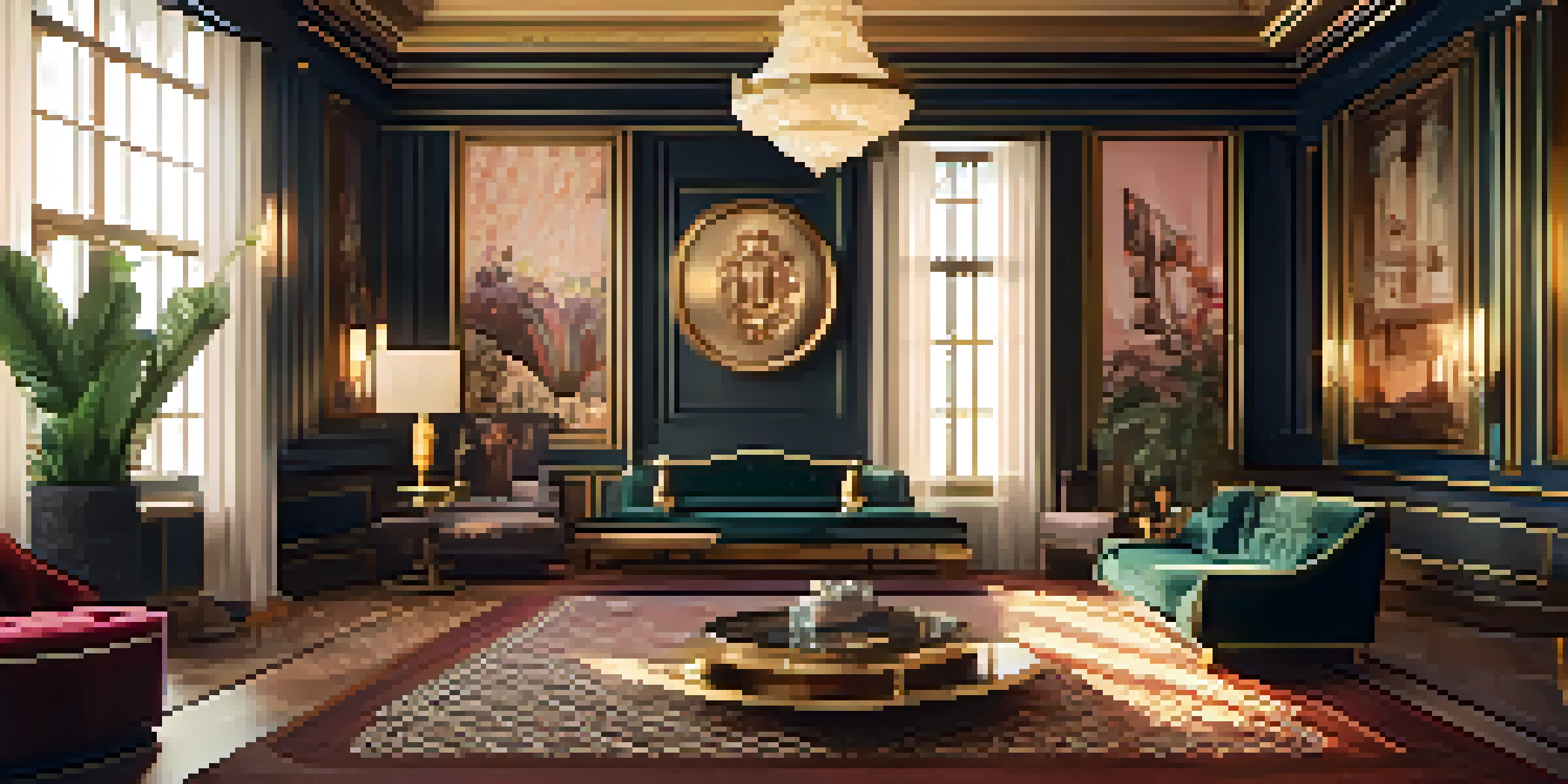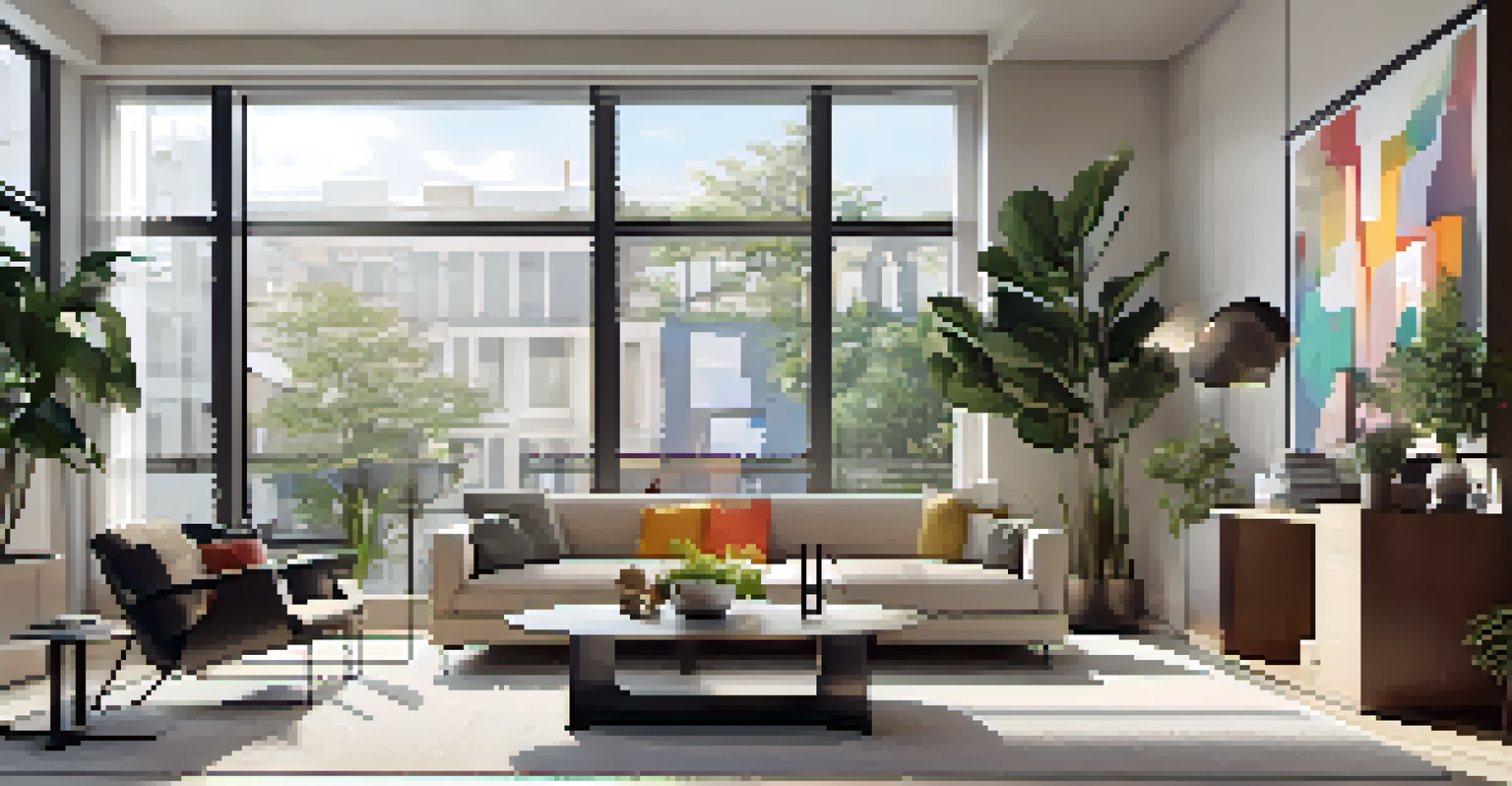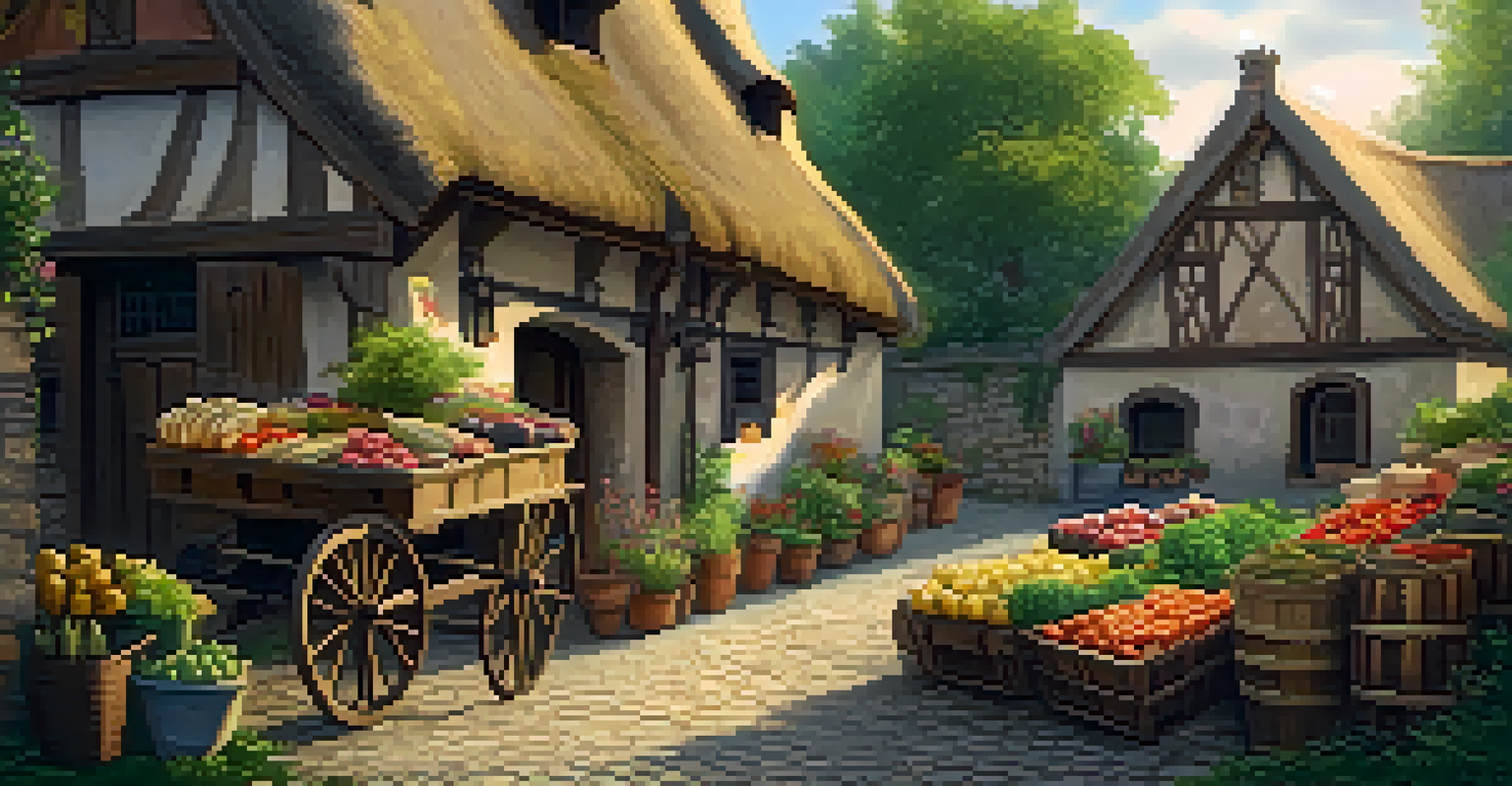Film Production Design: Crafting Visual Worlds for Stories

Understanding Film Production Design and Its Importance
Film production design is the art of creating the visual environment of a movie. It encompasses everything from the sets and locations to the props and costumes, ensuring that each element serves the story. Think of production design as the backdrop to a play—without it, the characters' actions and emotions would lack context and depth.
Production design is the visual storytelling of a film, it sets the stage for the narrative to unfold.
The importance of production design can't be overstated; it immerses viewers in the film's world, influencing their emotional responses. For example, a dark, cluttered room might evoke feelings of tension or unease, while a bright, spacious setting can create a sense of joy or freedom. This careful crafting of environments is what makes a film's world believable and engaging.
Moreover, production design helps to establish the film's tone and period, guiding the audience's expectations from the outset. Whether it's the glamorous art deco style of the 1920s or the gritty realism of a contemporary urban setting, these design choices play a crucial role in storytelling.
The Role of a Production Designer in Filmmaking
A production designer is responsible for the overall visual concept of a film. They collaborate closely with the director and cinematographer to ensure that the visual elements align with the film's narrative and tone. This role requires a mix of creativity and practical skills, as the designer must conceptualize ideas while also managing budgets and timelines.

One interesting aspect of a production designer's job is conducting research. They often delve into historical contexts or artistic styles to create authentic and immersive worlds. For instance, designing a medieval castle involves understanding the architecture of the time, which adds layers of authenticity to the film.
The Importance of Production Design
Production design creates the visual environment of a film, enhancing storytelling and immersing viewers in the narrative.
Additionally, production designers lead a team that includes art directors, set decorators, and prop masters. This collaborative effort ensures that every visual detail, from the grandest set pieces to the smallest props, contributes to a cohesive visual storytelling experience.
Key Elements of Production Design: Sets, Props, and Costumes
Sets are one of the most visible aspects of production design, serving as the primary backdrop for the film's action. Whether it's a sprawling mansion or a cramped apartment, each set must reflect the film's characters and themes. A well-designed set can enhance the storytelling, creating a more immersive experience for the audience.
Good production design is like a silent character in the film; it enhances the story without overshadowing it.
Props, on the other hand, are the items that characters interact with, and they hold significant narrative weight. For example, a character's choice of weapon or a cherished family heirloom can reveal much about their personality and backstory. The careful selection and placement of props can also foreshadow events or highlight themes within the story.
Costumes are equally vital, as they help to define characters and their arcs. A costume designer works closely with the production designer to ensure that the clothing aligns with the visual language of the film. A character's clothing can signify their social status, personality traits, or even their emotional journey throughout the film.
Creating Atmosphere: Color and Texture in Design
Color and texture are powerful tools in production design, used to evoke emotions and set the mood. A vibrant color palette can convey joy and excitement, while a muted palette might suggest melancholy or tension. The strategic use of color helps guide the audience's emotional journey through the film.
Texture adds depth and realism to the visual world, influencing how viewers perceive the environment. For instance, a rough, weathered wall might suggest neglect or hardship, while smooth, polished surfaces can indicate wealth and luxury. These tactile elements play a subtle yet crucial role in enhancing the film's atmosphere.
Role of Production Designers
Production designers collaborate with directors and teams to develop the film's visual concept, balancing creativity with practical execution.
Furthermore, the interplay of color and texture can create visual metaphors, reinforcing themes or character arcs. A character transitioning from a dark, gritty environment to a bright, open space can symbolize personal growth or new beginnings, making the visual language of the film resonate on a deeper level.
The Creative Process: From Concept to Execution
The journey of production design begins with brainstorming ideas and concepts that align with the film's vision. This process often involves sketching, creating mood boards, and developing color palettes that reflect the story's themes. It's a collaborative effort that requires input from various departments to ensure a unified vision.
Once concepts are approved, the production designer moves on to creating detailed plans and blueprints for the sets. This phase includes selecting materials, determining construction methods, and working with the art department to bring ideas to life. It's where creativity meets practicality, as designs must be feasible within budget and time constraints.
Finally, the execution phase involves overseeing the construction of sets, sourcing props, and dressing the spaces. The production designer works closely with the crew to ensure that every detail aligns with the original vision, making adjustments as needed. This meticulous process is what transforms an abstract concept into a tangible world that captivates audiences.
Collaboration: The Intersection of Art and Film
Production design is inherently collaborative, requiring input from directors, cinematographers, and other creative talents. Each member brings unique perspectives and expertise, creating a dynamic environment where ideas can flourish. This collaboration is essential for achieving a cohesive visual narrative that resonates with audiences.
For example, a director's vision can significantly shape the production design process. Their insights into character motivations and story arcs help the production designer make informed choices about sets and props. This synergy ensures that the visual elements align seamlessly with the film's narrative journey.
Technology's Impact on Design
Advancements in technology, like digital design and VR, are transforming production design, enhancing creativity while maintaining a blend of traditional craftsmanship.
Additionally, production designers often collaborate with other departments, such as visual effects and sound design. This holistic approach ensures that all aspects of the film work together harmoniously, creating a rich, immersive experience that captivates viewers from start to finish.
The Impact of Technology on Production Design
Technology has revolutionized production design, providing new tools and techniques for creating visual worlds. Digital design software allows production designers to visualize concepts in 3D, making it easier to experiment with different layouts and aesthetics. This technological advancement streamlines the design process, allowing for greater creativity and efficiency.
Additionally, advancements in virtual reality (VR) and augmented reality (AR) are changing how production designers approach their work. These technologies enable designers to create immersive environments that can be explored before physical sets are built. This not only saves time and resources but also enhances collaboration among the creative team.

However, while technology offers exciting possibilities, it's essential to maintain a balance between digital and physical elements. The tactile quality of handcrafted sets and props still holds a significant place in production design, grounding the film's world in reality. Ultimately, the best production design blends traditional craftsmanship with modern innovations, creating a visually stunning and authentic experience.